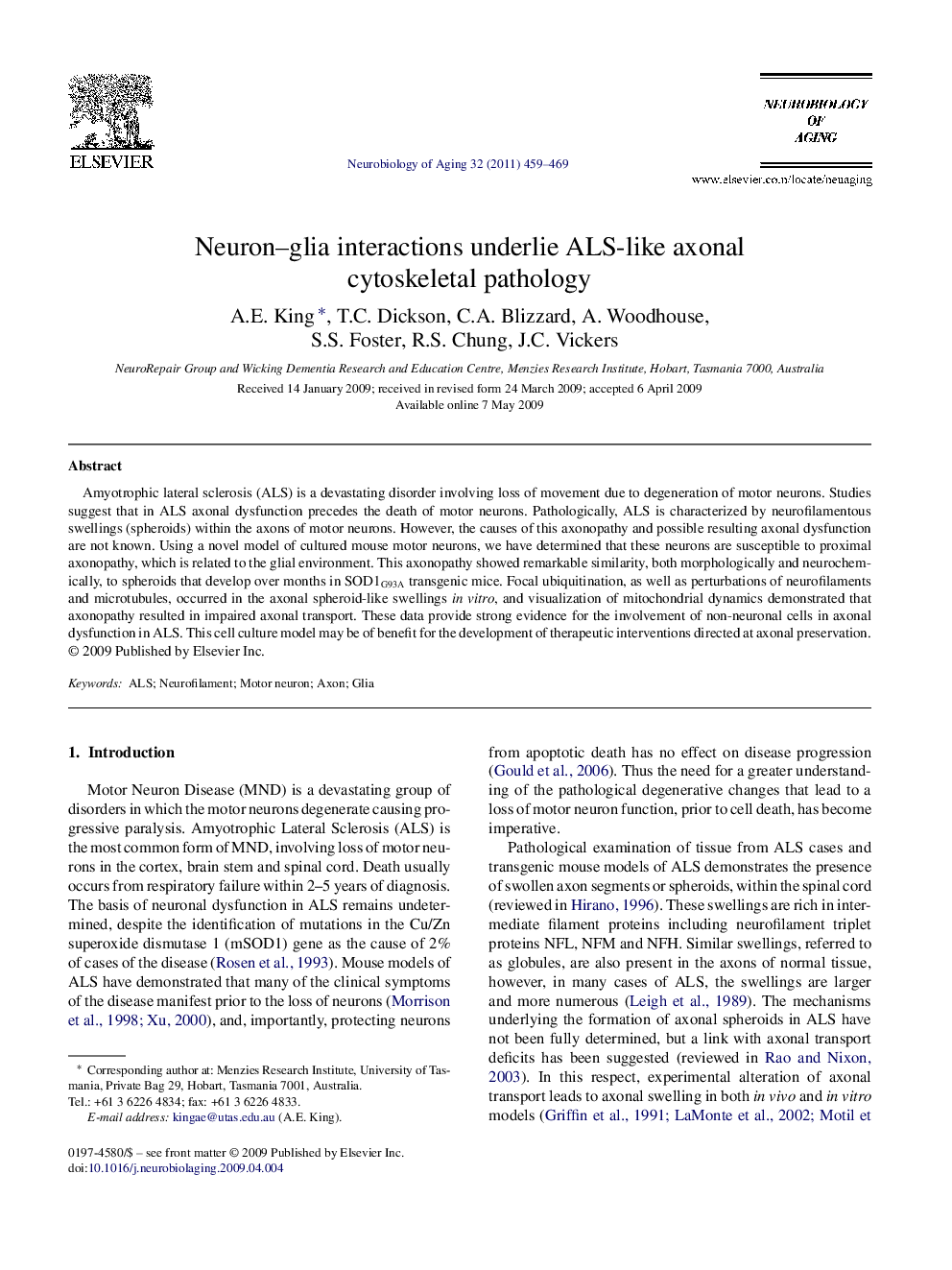| Article ID | Journal | Published Year | Pages | File Type |
|---|---|---|---|---|
| 329247 | Neurobiology of Aging | 2011 | 11 Pages |
Amyotrophic lateral sclerosis (ALS) is a devastating disorder involving loss of movement due to degeneration of motor neurons. Studies suggest that in ALS axonal dysfunction precedes the death of motor neurons. Pathologically, ALS is characterized by neurofilamentous swellings (spheroids) within the axons of motor neurons. However, the causes of this axonopathy and possible resulting axonal dysfunction are not known. Using a novel model of cultured mouse motor neurons, we have determined that these neurons are susceptible to proximal axonopathy, which is related to the glial environment. This axonopathy showed remarkable similarity, both morphologically and neurochemically, to spheroids that develop over months in SOD1G93A transgenic mice. Focal ubiquitination, as well as perturbations of neurofilaments and microtubules, occurred in the axonal spheroid-like swellings in vitro, and visualization of mitochondrial dynamics demonstrated that axonopathy resulted in impaired axonal transport. These data provide strong evidence for the involvement of non-neuronal cells in axonal dysfunction in ALS. This cell culture model may be of benefit for the development of therapeutic interventions directed at axonal preservation.
